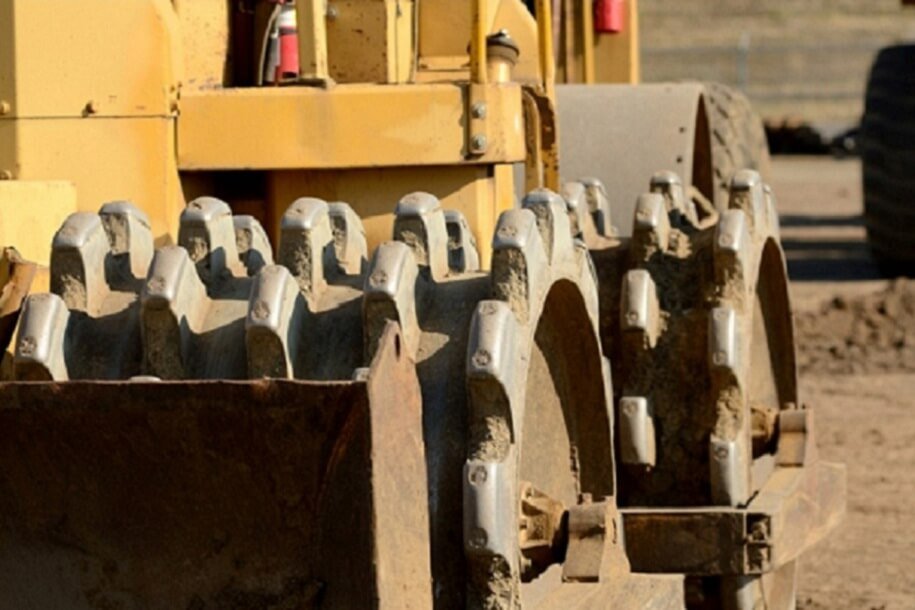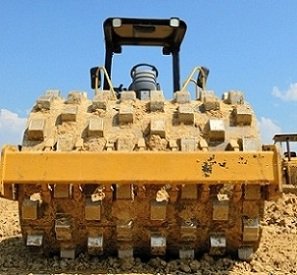These type of soil compaction equipment are most suitable for compacting fine grained soils such as heavy clays and silty clays. It can be used for compaction of soils in dams, subgrade layer in pavements and road construction projects. These rollers are also called tamping rollers.
Sheepsfoot roller consists of steel drum having many round or rectangular shaped lugs or foot on it. Different types of lugs or foot are namely spindle shaped with widened base, prismatic and clubfoot type. Different types of rollers are available having different diameters and widths of drum and different lengths and shapes of the lugs. The lugs size slightly varies from one sheepsfoot roller to another. Designing of the lugs of foots depend upon the specification and it varies from manufacture to manufacturers.
Different types of lugs are:


Maximum performance of sheepsfoot rollers for soil compaction can be achieved when lugs gradually walk out of the roller lugs with successive coverage. Performance is affected by the pressure on the foot and coverage of ground obtain as per pass.
Factor Affecting in the Soil Compaction are as follow:
01. Weight of the Roller
02. Area of the foot
03. No of foots in contact with ground
04. Number of foot per drum
05. Maximum pressure inserted on soil when the foot is vertical.
Soil compaction is the process in which a stress applied to a soil causes densification as air is displaced from the pores between the soil grains.In sheep foot roller, soil compaction is mainly due to foots penetrating pressure on the soil and pressure is maximum when foot is vertical. Speed and number of passes of sheepsfoot roller depend upon the nature of the soil to be compacted and it varies as per project requirement.
Characteristics Sheepsfoot Roller:
01. The Ground coverage area of these roller is less. 8-12 % ground coverage under the lugs on drum.
02. Contact pressure up to 1400 to 7000 kpa.
03. Sheepsfoot roller work normally at speeds from 6-10 km/h.
04. Pressure on the feet may be increased by filling the drum with wet sand or some other material.
06. Mostly used for cohesive soils such as heavy clays and silty clays except for sandy soil.
07. Compactative efforts are static weight and kneading.
08. The thickness of compacting layer is kept minimum 5 cm or more, which depends on the length of foot.
